The Google Nexus 9 Review
by Joshua Ho & Ryan Smith on February 4, 2015 8:00 AM EST- Posted in
- Tablets
- HTC
- Project Denver
- Android
- Mobile
- NVIDIA
- Nexus 9
- Lollipop
- Android 5.0
Software
With the Nexus 9, Google has released the biggest upgrade to Android since 4.0. In some ways, Android 5.0 represents one of the biggest shifts in the design of the OS ever. While we’ve had JIT compiling on Dalvik since Android 2.2, this has remained largely static for the past few years during Android’s monumental growth. With Android 5.0, we see the introduction of Android Runtime, or ART. Instead of trying to compile the application right before execution, ART does most of the compilation well before the application is launched. This incurs higher storage requirements, longer app-install times, and longer first-boot times, but with great benefits to performance. Google has done a great deal of work in general to try and resolve performance issues, as we first detailed in our coverage on ART.
While performance is one major aspect of Android 5.0, Google has also fundamentally redesigned the interface. To replace Holo, Google has introduced Material Design, which emphasizes depth, physics, animation, and a new palette of colors. While it would be great to go over all of these aspects of the Nexus 9, it’s best to refer to Brandon's review of Android 5.0 Lollipop for these issues. Instead, for this review I will mostly focus on the Lollipop experience specific to the Nexus 9. This means that the focus will be on performance of the device in general usage, along with the app ecosystem for Android tablets.
Unfortunately, these seem to be sore points of the Nexus 9 and the broader Android tablet ecosystem. Without question, if we’re talking about tablet applications they definitely do exist for the Nexus 9. The problem is that there is a pervasive lack of applications that are truly designed for a 9 inch, 4:3 aspect ratio display. Applications like Twitter, Facebook, and other first-party apps are simply blown up versions of the phone application. There is some level of extra content presented, but a lot of applications just don’t scale correctly which wastes a lot of real estate on the display. While we found issue with the Nexus 6’s lack of phablet-specific layouts, this is an even bigger issue on the Nexus 9.
While it’s possible to point fingers at app developers for not supporting Android properly, Google seems to have these problems as well. The settings interface is a single large pane of options, instead of a dual-pane interface that allows for simultaneous navigation of the overall settings and individual settings. The Play Store application is mostly similar in this respect, and the YouTube app is possibly the worst example of these kinds of issues. For example, while there is a tablet-specific video view in landscape, most navigation, search, and video selection is identical to what we see on a smartphone.
Nothing really takes advantage of the screen size other than simply being bigger than before. There aren’t any multi-window modes that exploit the larger screen size, and in general the Nexus 9 doesn’t introduce any new functionality that clearly justifies the need for a bag/backpack to carry it. There are applications that take advantage of the larger display, but these are rare. For the most part though, this is effectively true for most tablets other than the Surface Pro 3 which is effectively in a different category altogether.
On the performance side, the story is better but it isn’t perfect either. Similar to Brandon’s experience with the Nexus 6, I often saw random stutters on animations such as the app drawer or while opening an application. It’s hard to say what the cause is at this point, as the Nexus 6 seems to have similar issues with lag even though the Nexus 5 has none of these issues. One might point to FDE causing worse performance, but even that isn’t quite accurate as a build of Lollipop with FDE disabled didn’t do all that much in the way of solving these problems. Overall though, the experience is somehow less performant than the SHIELD Tablet on Android 5.0, even if these issues mostly present themselves in the form of minor frame drops from time to time. I also noticed that there was a distinct lack of available memory over time, which suggests a memory leak as on reboot launcher redraws effectively disappeared.
While these are significant issues that need to be resolved, the experience isn’t actually as bad as it seems. For what it’s worth, Material Design is a great new design scheme to replace the somewhat dated Holo UI that has been in use since Honeycomb/Android 3.0. While there are issues with the tablet experience, if one is willing to look past these issues they will find that the Nexus 9 is a respectable software experience. There’s also the potential for the Nexus 9 to spur improved tablet experiences, although this would be a slow change that could take years to be meaningful.


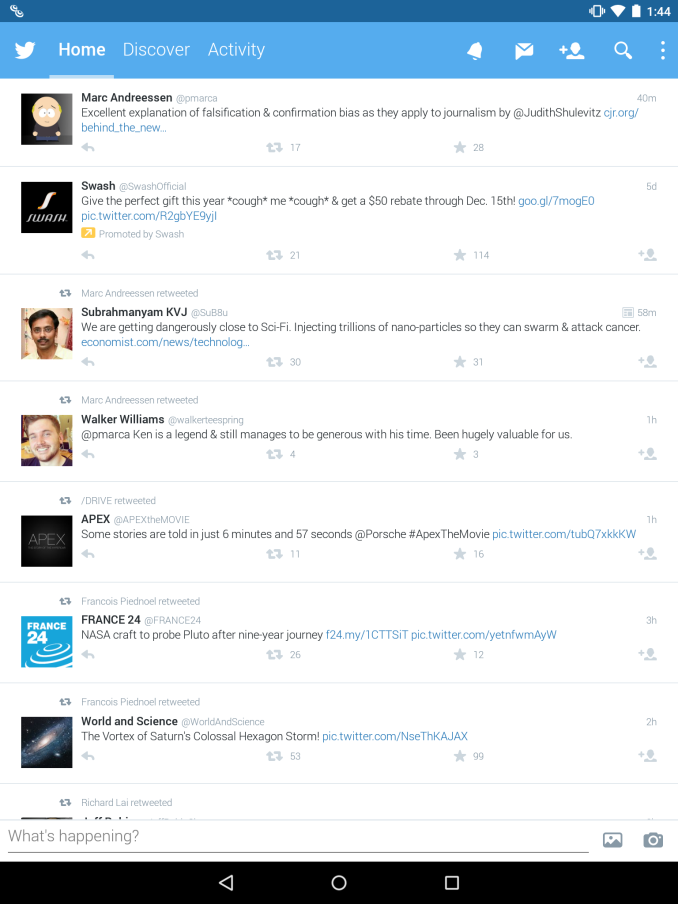
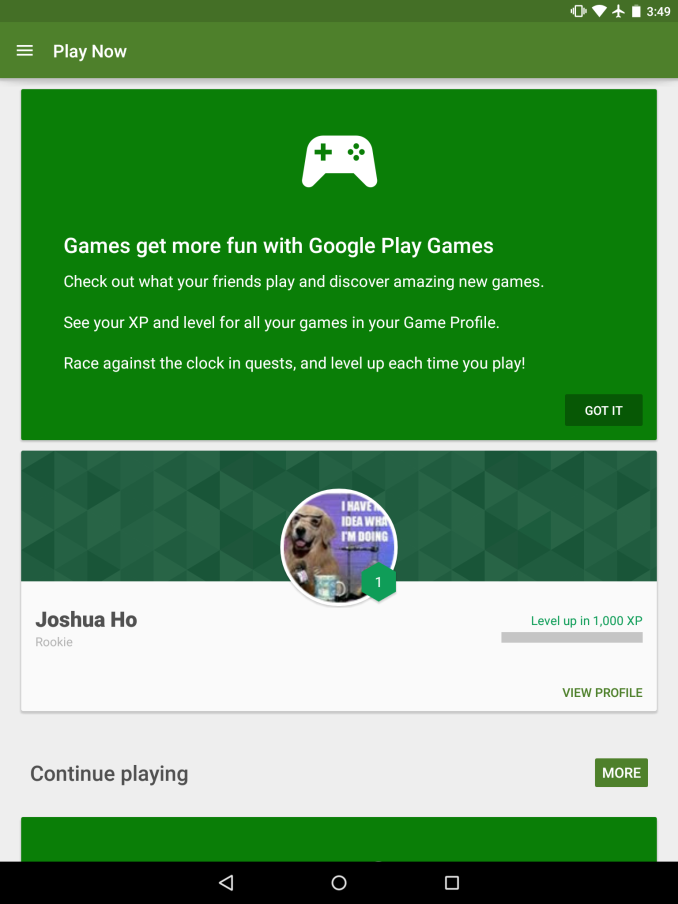
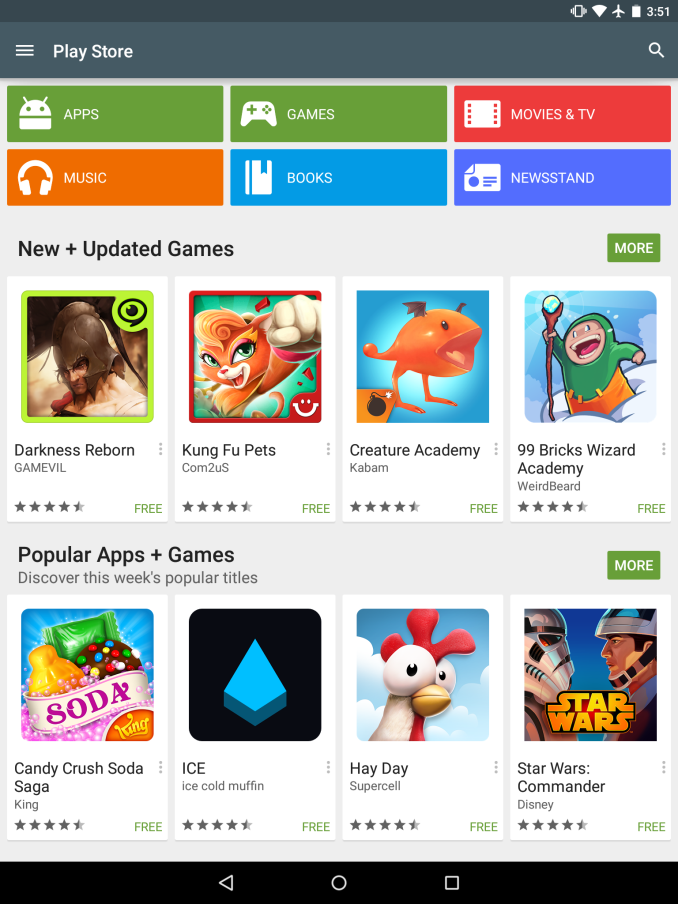
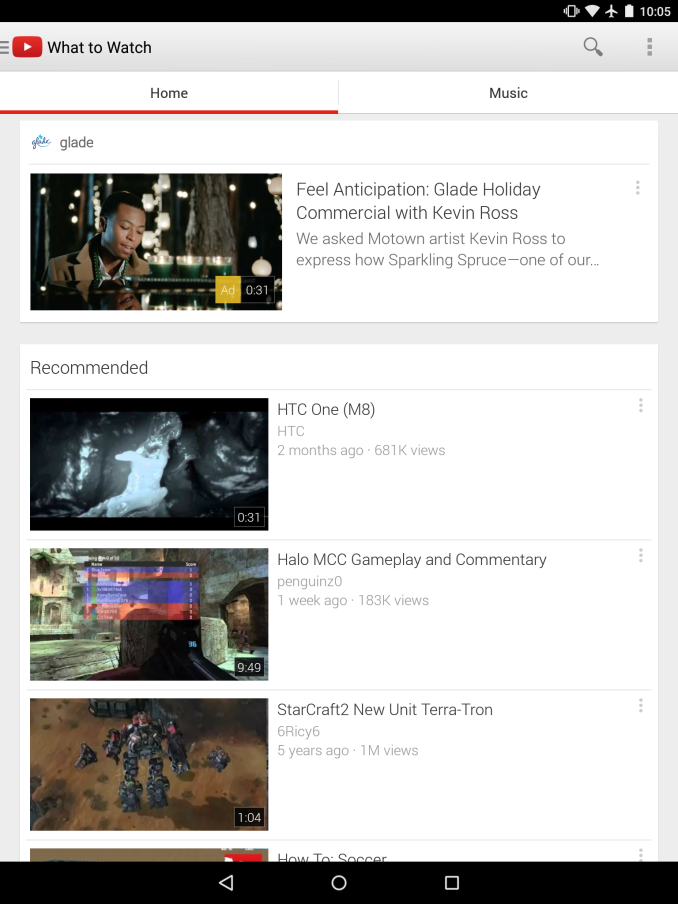
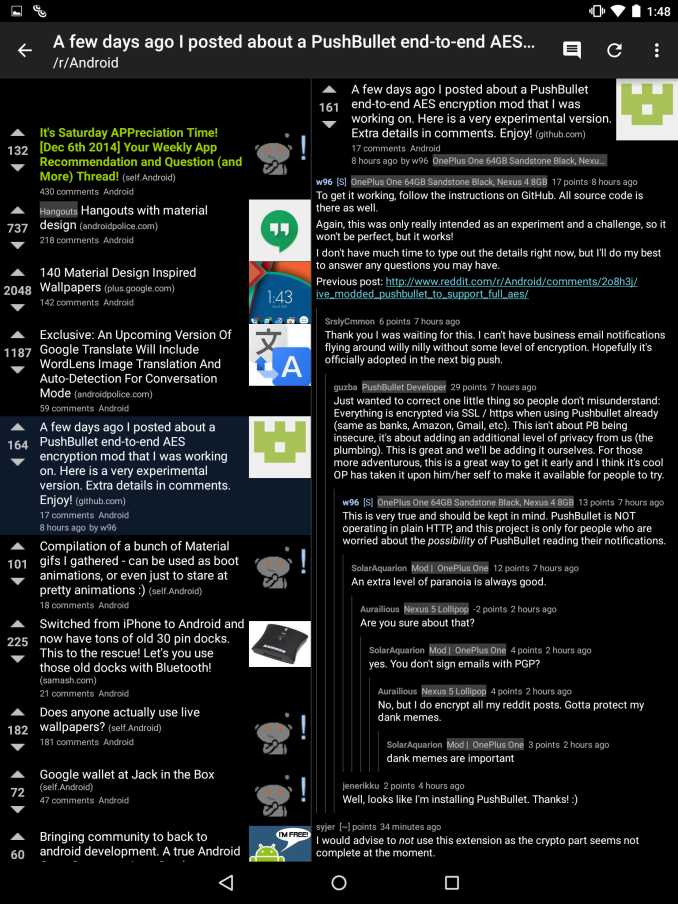








169 Comments
View All Comments
PC Perv - Wednesday, February 4, 2015 - link
It is clear, even though you did not say, why no one other than NV and Google will use Denver in their products. Thank you for the coherent review, Ryan.P.S. I can't wait for the day SunSpider, Basemark, and WebXPRT disappear from your benchmark suit.
jjj - Wednesday, February 4, 2015 - link
You always make those kind of claims about dual core vs more cores but you have never attempted to back them up with real world perf and power testing.In real use there are alerts and chats and maybe music playing and so on. While your hypothesis could be valid or partially valid you absolutely need to first verify it before heavily insisting on it and accepting it as true. Subjective conclusions are just not your style is it, you test things to get to objective results.
And it wold be easy you already have "clean"numbers and you would just need to run the same benchmarks for perf and power with some simulated background activity to be able to compare the differences in gains/loses.
PC Perv - Wednesday, February 4, 2015 - link
Where would you put the performance of "backup" ARM-only part of Denver? Cortex-A7? Is it measurable at all?Also, why don't Samsung use F2FS for their devices? I thought it was developed by them.
abufrejoval - Wednesday, February 4, 2015 - link
While the principal designer seems to be a Korean, I'm not sure he works for Samsung, who typically used Yet Another Flash File System (YAFFS).Ryan Smith - Wednesday, February 4, 2015 - link
It's not measurable in a traditional sense, as the DCO will kick in at some point. However I'd say it's somewhere along the lines of A53, though overall a bit better.Shadowmaster625 - Wednesday, February 4, 2015 - link
The design philosophy of the DCO does make a lot of sense. When your mobile device starts to bog down and you start cursing at it, what is it usually doing? It is usually looping or iterating through something. The DCO wont help with small blocks of code that execute in 500uS, but you dont need help with that sort of code anyway. What you want to improve is exactly the type of code the DCO can improve: the kind of code that takes several dozen milliseconds (or more) to execute. That is when you begin to notice the lag in your cpu.mpokwsths - Wednesday, February 4, 2015 - link
Joshua & Ryan,please update the charts with the bench results of the newer version of Androbench 4: https://play.google.com/store/apps/details?id=com....
(I had previously commented on the fact that you can't safely compare the i/o results of different OS AND different bench apps).
Androbench 4 is redesigned it to use multiple i/o threads (as a proper i/o bench app should have) and produces vastly improved results on both Lollipop and earlier Android devices.
You will not be able to compare the newer results with older ones, but at least it will put an end to this ridiculus ι/ο performance difference between iOS and Android, the one you persistently -but falsly- keep projecting.
Andrei Frumusanu - Wednesday, February 4, 2015 - link
I tested this out on several of my devices and could see only minor improvements, all within 10%. The performance difference to iOS devices does not seem to be a dupe at all.mpokwsths - Wednesday, February 4, 2015 - link
My results strongly disagree with you:Nexus 5: Seq Write: 19MB/s --> 55 MB/s
Rand Write: 0.9 --> 2.9 MB/s
Sony Z3 Tablet: Seq Write: 21 MB/s --> 53 MB/s
Rand Write: 1,6 MB/s --> 8MB/s
Seq Read: 135 MB/s --> 200MB/s
I can upload pics showing my findings.
mpokwsths - Wednesday, February 4, 2015 - link
Meet the fastest Nexus 5 in the world:https://www.dropbox.com/s/zkhn073xy8l28ry/Screensh...;)